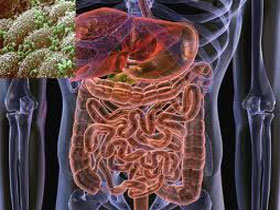
Dysbacteriosis very common modern disease, intestinal manifestations are quite diverse.
They are totally dependent on the initial cause of the disease, the patient's age, individual sensitivity, the nature of the drugs and species of microorganisms, who are involved in a violation of intestinal microflora.
Degrees of dysbacteriosis and step GG. Kuznetsova
Also in 1972 by GG. Kuznetsova proposed classification of the disease. It consists of four stages and four degrees of disease severity:
- The first stage - the number of beneficial bacteria (bifidobakteriy and (or) lactobacilli) reduced, while negative microflora growth is not observed. In this period it is quite difficult to diagnose disease, because the clinical manifestations are not yet available. true, All exceptions are, namely, frequent colds, deterioration or complete lack of appetite. For children still lag in weight gain from their peers.
- The second stage - a marked increase (decrease) followed flora dominated kolibakterialnoy, enzymatically incomplete and atypical E. coli. There is a violation of a chair: diarrhea with foul odor and with a characteristic green admixture or constipation and flatulence.
- The third stage - credits conditionally pathogenic intestinal microflora are at high level. Pathogenic bacteria are actively multiplying. Diarrhea is chronic, It has a pronounced green color, visible undigested food residue. The patient regularly disturbed flatulence and colic. Overall health and significantly worsens: completely absent appetite, anemia. For a newborn baby are also characteristic signs of rickets. Persistent disease, who are long-term in nature.
- The fourth stage - in high titers prevalent Pseudomonas aeruginosa or Proteus bacteria. This stage is the most dangerous. In the intestine, are rapidly evolving pathogens such as dysentery, Salmonella and pathogenic Escherichia coli species, able at any time to provoke the development of acute infectious process. In this case, intestinal microbes rapidly colonize the whole body, which results in an inflammation of many organs. The danger of pathogens is, that it does not break down digested food, and thus leads to the release of toxins. When they enter the blood marked general symptoms of poisoning organism, which are chronic.
During the first degree of severity of dysbiosis in the gut by GG. Kuznetsova over the normal microflora is dominated by negative.
For a second degree of disease characterized by the same number of anaerobes and aerobes enteric, increased number of atypical strains. Besides, possible manifestation colony hemolyzing E.Coli or even staph.
The third degree - a rapidly increasing number of opportunistic pathogens and atypical coliform. At the same titles lacto- and bifidobacteria are too low.
The fourth form of the disease is dominated by opportunistic microorganisms, among which is dominated by staphylococcus, protests and streptokokk.
Dysbiosis phase of BF. wallpapers
The second classification of diseases, proposed BF. Penegin in 1987 year. In accordance therewith isolated such phrases:
- initial phase. It is characterized by an increase simbiontonov;
- The second phase. Improvement of microorganisms in the intestine, which normally should not be there or they are in a minimum amount;
- The third phase. Expanding the boundaries of the localization of bacteria. They appear there, where normally they should not be.
- The fourth phase. Specific gravity opportunistic strains growing rapidly.
Existing degree of dysbiosis, which focus on doctors

In addition to these classifications, there is still some degree of dysbiosis, which offers scientists in different periods of time. Despite the lack of universally accepted classification and the availability of different options for dysbiosis requires, allocated to certain clinical forms of disease progression. The industry standard has been developed so-called "Treatment Protocol dysbiosis", in which scientists and doctors decided to introduce a standard degree of disease development. There are only three.
- dysbacteriosis 1 degrees characterized by a reduction by one to two orders of bifidobacteria and lactobacilli, simultaneously, and separately. Possibly lowering (increase) Escherichia coli with the appearance of a small titer in changing their shapes, but not anymore 15%.
- dysbacteriosis 2 degrees determine provided, that there is one representative opportunistic bacteria, concentration which does not exceed 105 Cfu / g or opportunistic microorganisms unions, titles which are relatively small. To this extent of disease are also characterized by high levels of E laktozootritsatelnh. coli, enzymatic properties are significantly changed.
- dysbacteriosis 3 degrees. Conditionally pathogenic microorganisms in the assays are displayed in high titers. This may be, as a single species, and his association.









Leave a Reply